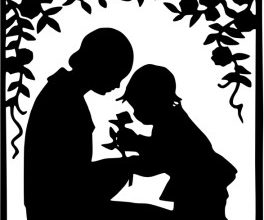The Decay of Lying by Oscar Wilde is a thought-provoking exploration of the relationship between art and nature, using his characteristic wit and paradoxical style. The essay presents Wilde’s belief in the superiority of art over nature, arguing that art should not merely mimic reality but should create an idealized version of it.
The Decay of Lying | Summary
Wilde presents his ideas in the essay through a dialogue between Cyril and Vivian in Nottinghamshire, England. Vivian shares a text from an article he is writing called ‘The Decay of Lying: A Protest’. Wilde’s key idea is what he calls “lying in art”; that art begins with a purely pleasurable intention that deals with what is unreal. The proper aim of art is lying, or constructing beautiful untrue things for pleasure. He claims that this method is on the decline when it comes to the novel. Vivian explains in Cyril’s questioning that creativity and imagination are threatened in fiction when facts take the place of creative fiction.
Vivian goes on to explain that the decay of lying, as the title suggests, is the erosion of imagination in fiction and substituting it with facts, which hinders the production of pleasurable art. The modern novel leans more anymore towards realism and thus is quite “unreadable”. Vivian critiques several prominent authors of the time, including Robert Louis Stevenson, who is “tainted with a modern vice”. By making a story “too true”, one robs it of any joy. Vivian also criticizes novelists Sir Henry Rider Haggard, Henry James, Sir Hall Caine, William Black, Francis Marion Crawford, and Guy de Maupassant. He is more complimentary of Balzac.
Talking about the historicity of lying in art, Vivian tells Cyril that ancient Greeks indeed objected to realism claiming that it makes people ugly. Lying in art has thus always existed, and it must make a return to the same. Wilde argues that art should not aim to imitate nature but should instead create its own reality, which is more beautiful and idealized than the natural world. He suggests that lying, or the imaginative fabrication of artistic elements, actually leads to a higher form of truth in art. Work produced under the influence of nature is antiquated and never up to date. He says that nature is humanity’s creation because it “is in our brain that she quickens to life,” and what people see “depends on the Arts that have influenced us.” “This,” he insists, “is the secret of Nature’s charm, as well as the explanation of Nature’s weakness.”
Vivian also claims that life imitates art far more than art imitates life. Wilde notes that all of life is a desire for expression and art provides the various forms through which this expression can be obtained. Life merely attempts to initiate what has already been expressed in art. Vivian then turns to literature, saying literature always anticipates life. He cites anecdotes from Thakeray’s Vanity Fair, and what happened to the real Mr. Hyde from Stevenson’s novel The Strange Case of Dr. Jekyll and Mr. Hyde. Vivian concludes by saying that art does not reflect society, but in fact, creates it.
The Decay of Lying | Analysis
Wilde employs the personas of two characters, Vivian and Cyril, to engage in a fictional dialogue that delves into the themes of aesthetics, creativity, and the purpose of art. Vivian, representing Wilde’s perspective, champions the idea that lying, or imaginative invention, in art, is not only justifiable but also essential. He argues that the artist’s duty is to present life as it should be rather than as it is, crafting a realm more beautiful and captivating than reality.
By contrasting the “lying” of art with the “truth” of nature, Wilde challenges conventional norms and prompts readers to reconsider their understanding of reality. He criticizes the mundane and banal nature of reality, suggesting that it lacks the vividness and creativity of art. Wilde’s essay encourages readers to see beyond the literal and embrace the transformative power of art.
Wilde’s analysis of the relationship between art and nature can be interpreted as a critique of the prevailing realism of his time. He laments the tendency to prioritize accuracy over imagination and to view art as a mere reflection of the world. Instead, Wilde champions the idea that art has the potential to shape reality, guiding society toward an enhanced and more aesthetically pleasing existence.
About the Author
Oscar Wilde, a literary luminary of the late 19th century, captivated the world with his eloquent prose, biting wit, and unapologetic individuality. As an Irish playwright, poet, and essayist, he masterfully blended social critique with artistic innovation, challenging the norms of Victorian society. Wilde’s works, such as “The Picture of Dorian Gray” and “The Importance of Being Earnest,” deftly examined the dualities of human nature and the facades society often presents. With his trademark epigrams and sharp observations, he unveiled the absurdities of societal conventions and celebrated the pursuit of aesthetic ideals. Wilde’s tumultuous personal life, marked by his open defiance of social norms and subsequent imprisonment, adds a layer of complexity to his legacy. His enduring influence as a wordsmith and a symbol of individual expression ensures that his brilliance continues to shine in the literary firmament.
In conclusion, “The Decay of Lying” is a captivating essay that challenges conventional ideas about art, reality, and truth. Oscar Wilde uses his characteristic wit and paradox to advocate for the importance of artistic invention and the creation of an idealized world that surpasses the limitations of nature. The essay continues to provoke discussions about the role of art in society and the boundaries between truth and imagination.



